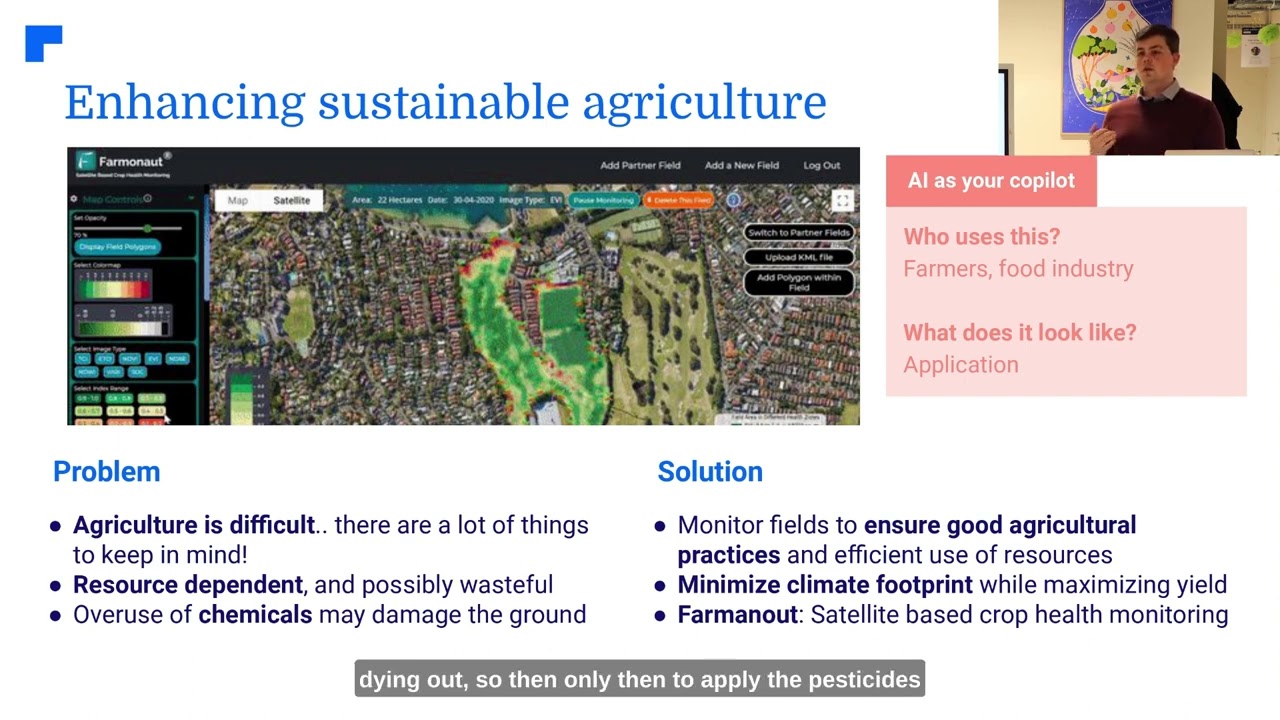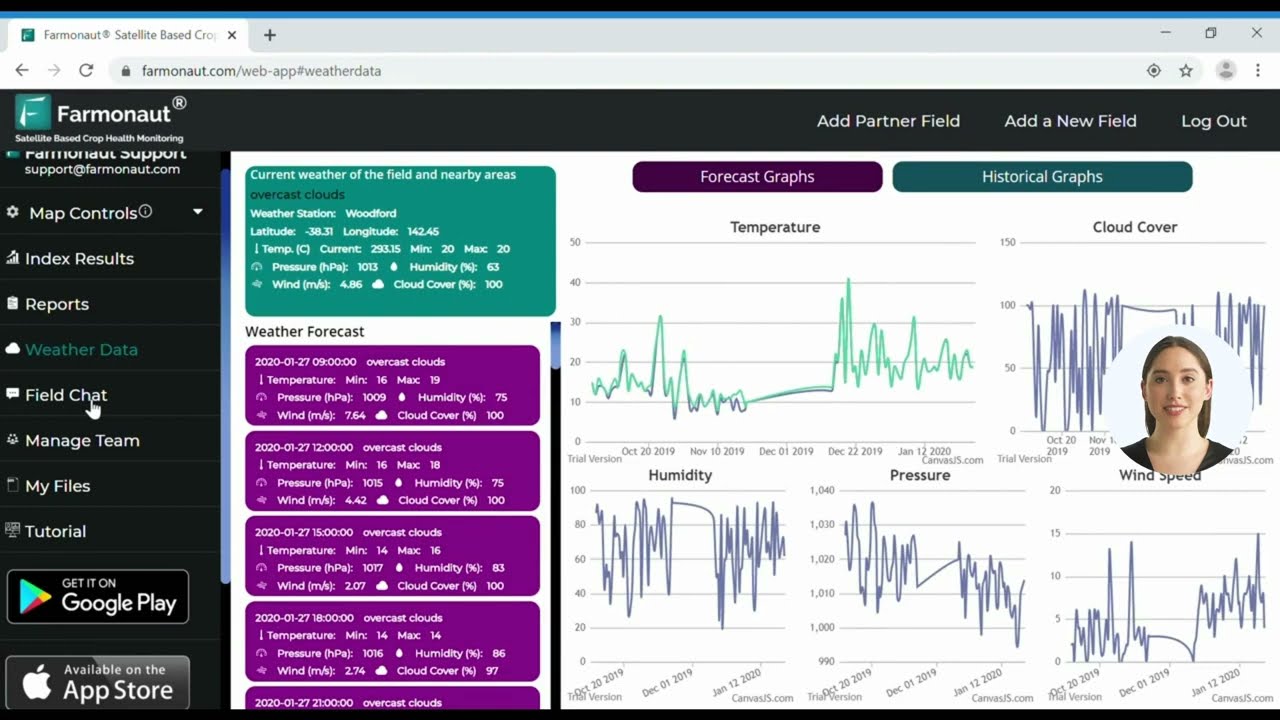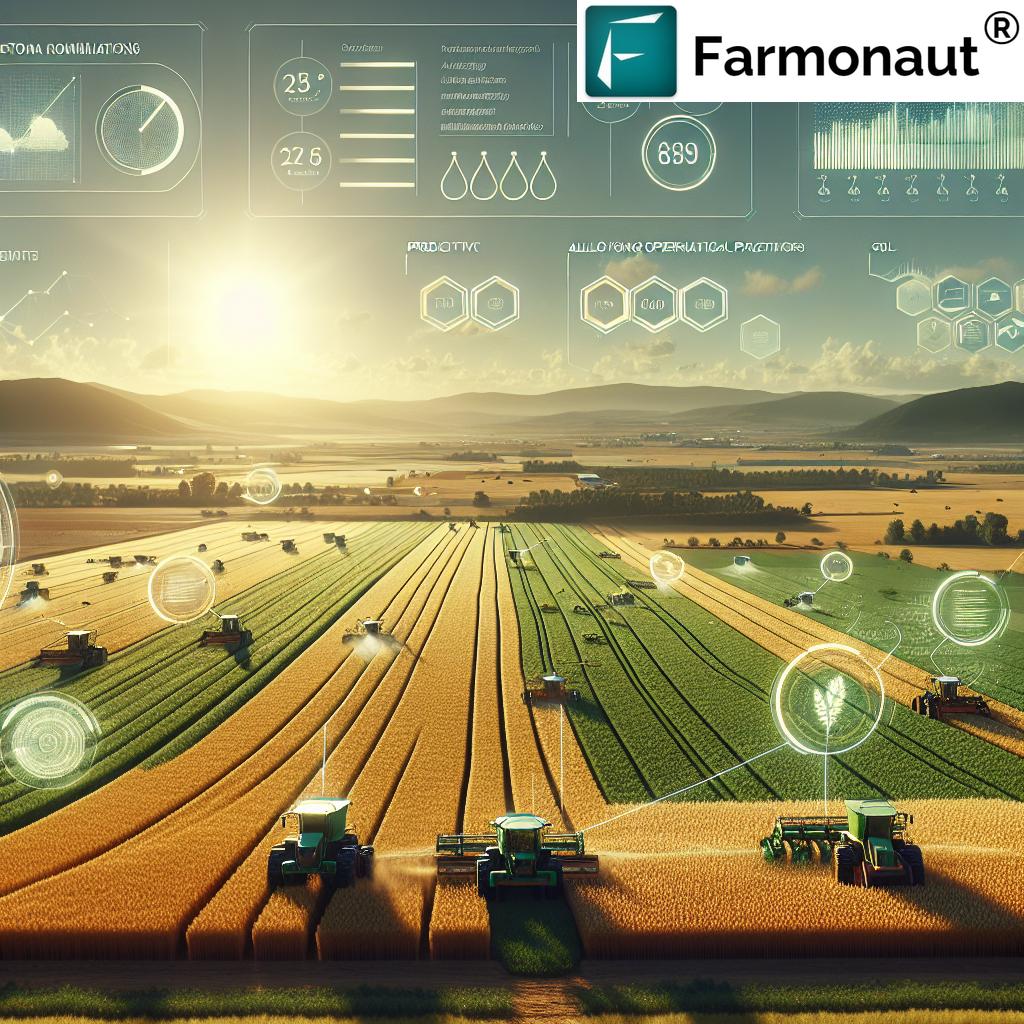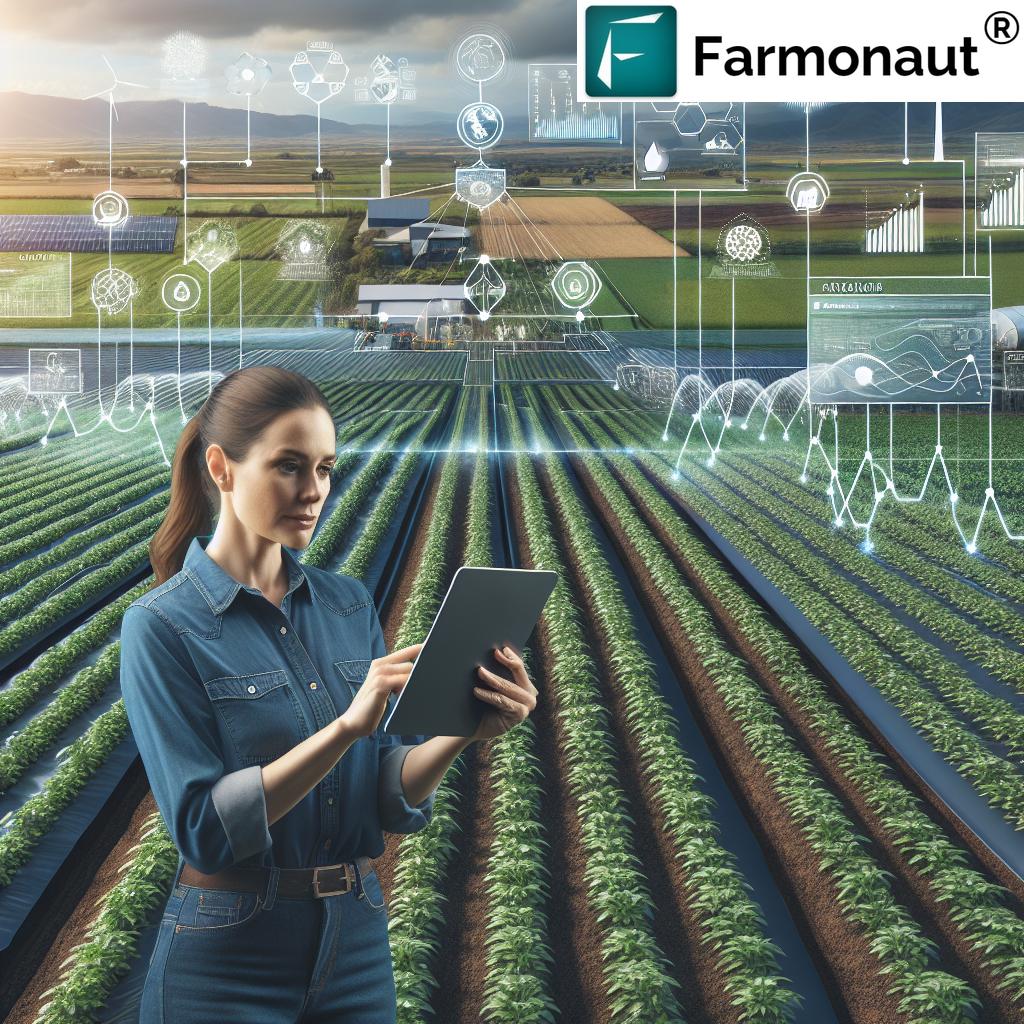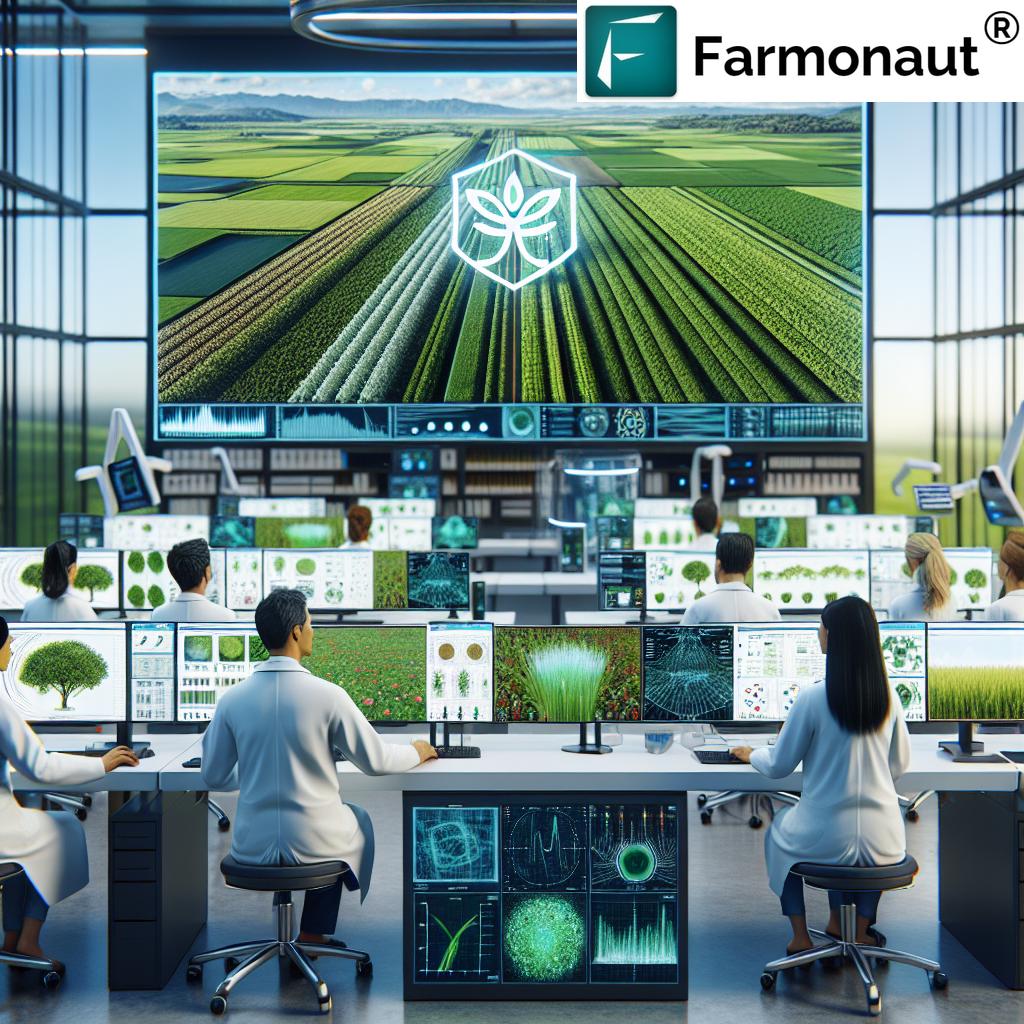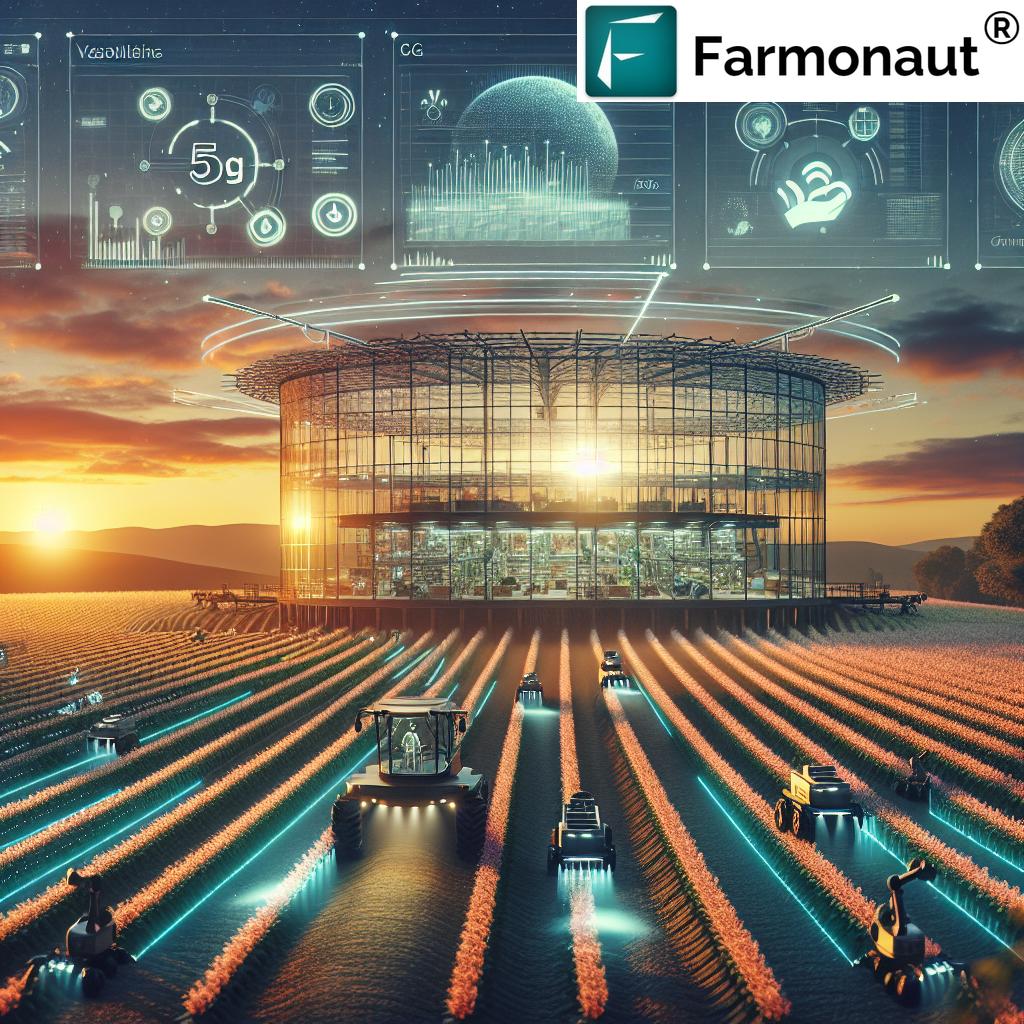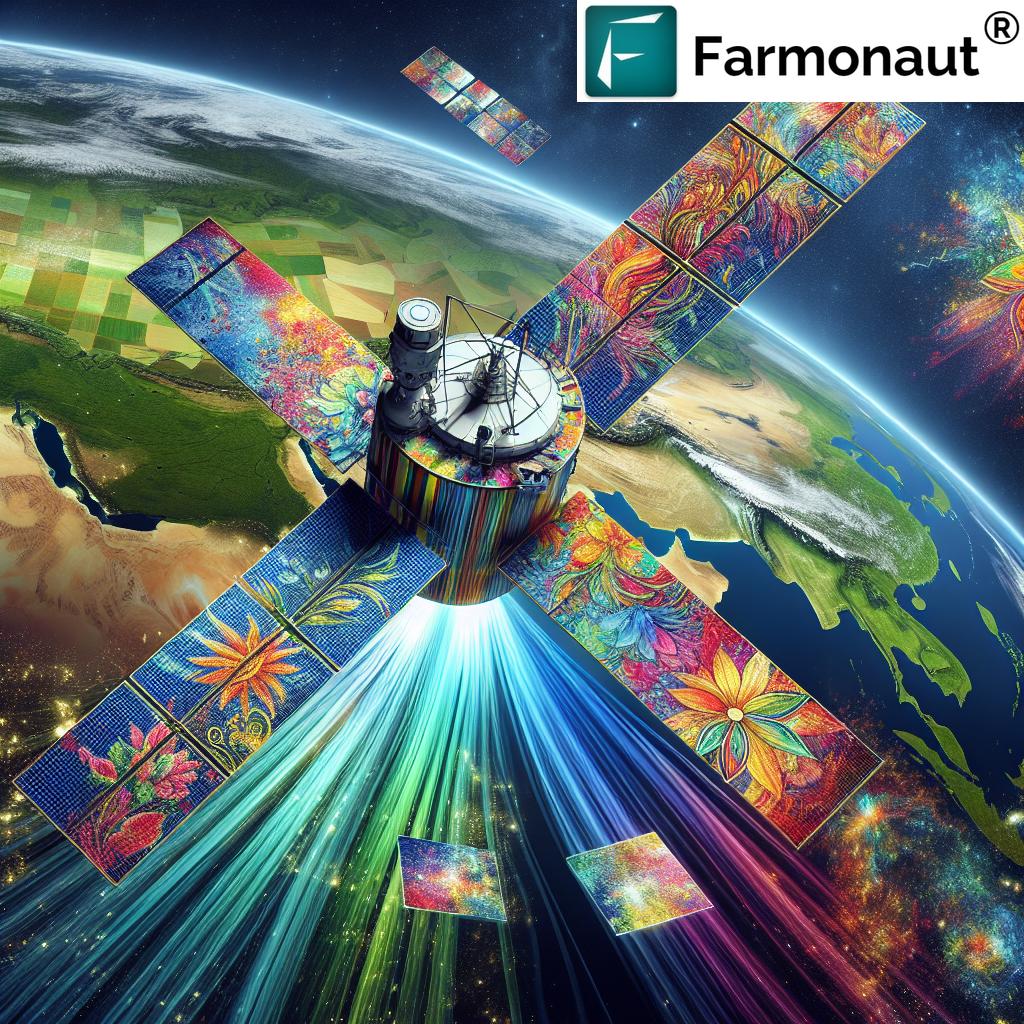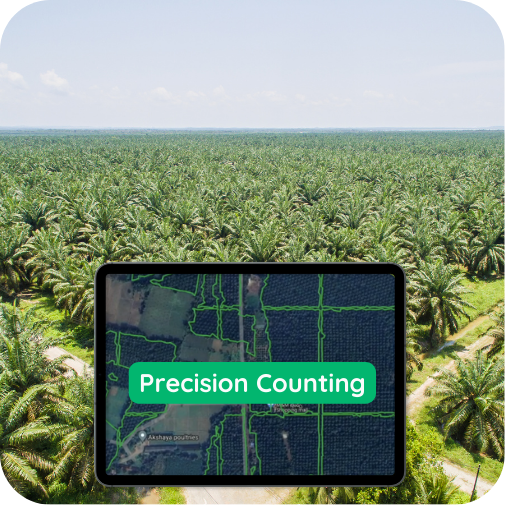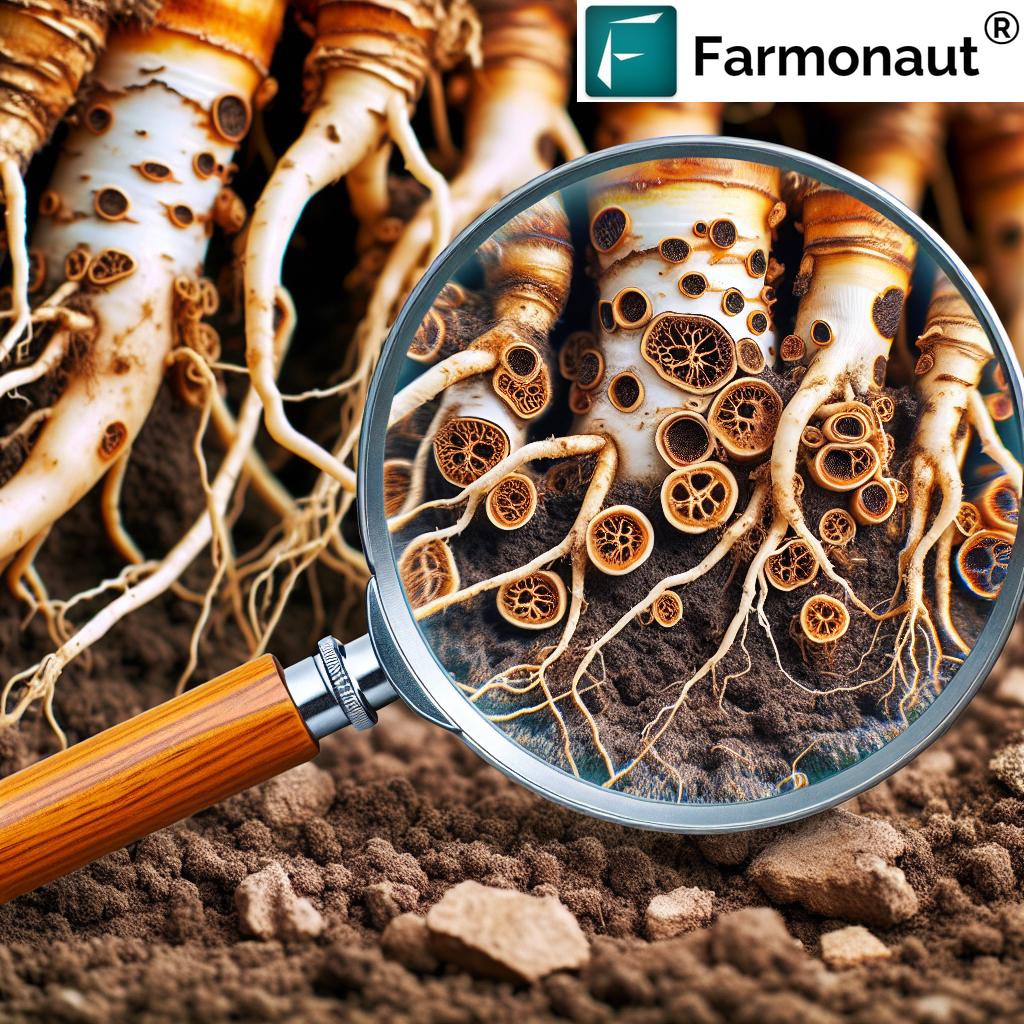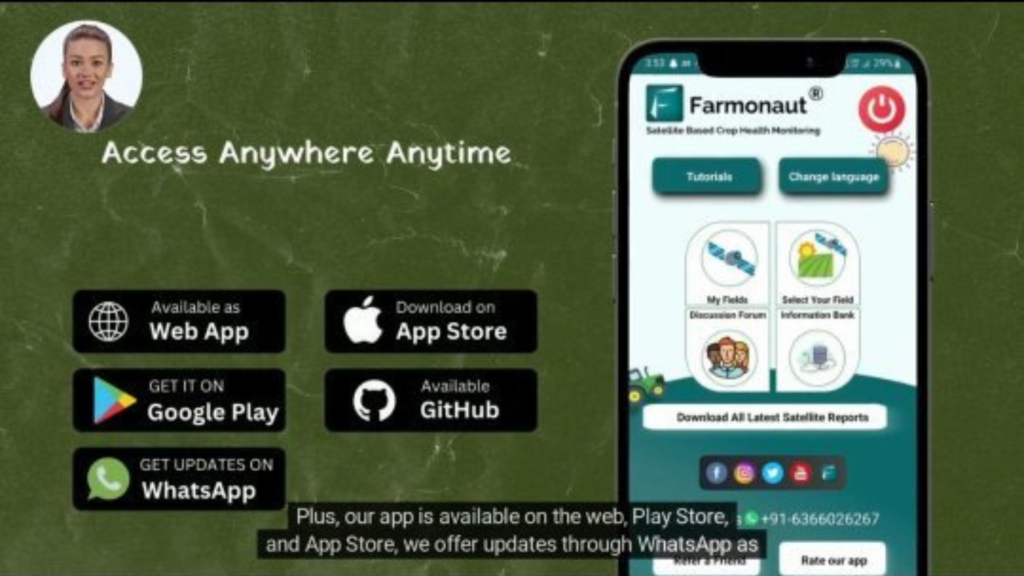Table of Contents
- Introduction
- Did You Know?
- Understanding Precision Agriculture
- The Role of Data Analytics in Precision Agriculture
- Key Technologies Empowering Precision Agriculture
- Major Benefits: Why Make the Switch?
- Comparative Impact Table: Precision vs. Traditional Agriculture
- Farmonaut: Making Precision Farming Accessible Globally
- Transforming Farming Practices Through Technology
- Challenges and Real-World Considerations
- The Dynamic Future of Precision Agriculture
- Frequently Asked Questions (FAQ)
- Get Started: Farmonaut Subscriptions
Boost Yields Fast With Precision Grow Data Analytics!
“Precision agriculture can increase crop yields by up to 20% through advanced data analytics and targeted resource management.”
In an age marked by rapid global change and an ever-increasing demand for food, efficiency and sustainability are no longer complementary goals—they are imperative for survival and growth. Precision agriculture, also known as precision farming, sits at the crossroads of groundbreaking technologies such as IoT in farming, artificial intelligence in agriculture, data analytics and satellite-powered solutions, fundamentally altering how farmers approach crop yield optimization, resource management, and environmental sustainability.
Our journey with precision agriculture is not simply a technological upgrade—it’s a necessary evolution. With the integration of remote sensing in agriculture and actionable data analytics, we as a community of farmers, agribusinesses, and food value chain actors are reshaping how we manage our land, nurturing healthier soil, sustainable ecosystems, and thriving communities. In this comprehensive guide, we will demystify how these precision farming technologies work, their tangible benefits, and how Farmonaut is making these breakthroughs available and affordable, empowering everyone from smallholders to mega-agribusinesses.
Understanding Precision Agriculture: The Smart Farming Revolution
The concept of precision agriculture revolves around the idea of tailoring every action on the field to the specific needs of crops, soil, and local weather patterns—no more, no less. By combining advanced analytics with satellite, IoT and other connected devices, we can optimize planting, irrigation, fertilization, and harvesting practices, delivering the right input, at the right time and place, every time.
- Definition: Precision agriculture is a data-driven management approach that leverages information technology, machine learning, IoT in farming, and satellite-derived remote sensing to monitor, analyze, and manage variability in fields.
- Why it matters: This approach ensures that each square meter of our farmland is treated according to its unique conditions, enhancing efficiency, cutting waste, and promoting environmental sustainability.
- How it works: Advanced sensors, farm machinery, analytics platforms, and advisory apps work in sync to provide us with insights that directly impact productivity and profitability.
The Precision Agriculture Cycle
- Data Collection: Via IoT sensors, satellite imagery, field machinery, drones
- Data Analytics: Platforms analyze vast datasets—weather, soil, crop health, equipment stats
- Actionable Insights: Real-time and predictive models generate alerts, recommendations, and strategies
- Targeted Interventions: Farmers act based on tailored, zone-specific advice—such as variable rate fertilization or precision irrigation
- Continuous Improvement: Each season’s results feed back into the system to refine and optimize future processes
The Role of Data Analytics in Precision Agriculture
Data analytics lies at the heart of precision farming, offering us the ability to transform massive amounts of agricultural data into actionable insights for smarter decision-making. Let’s break down this backbone:
How Analytics Drives the Precision Approach
- Integrating Technologies: IoT in farming, satellite imagery for crop monitoring, and AI-powered analytics work together to provide a holistic view of field and crop conditions.
- Real-time Monitoring: We can monitor parameters like soil moisture, temperature, humidity, and even crop growth rates as they change, enabling timely interventions.
- Forecasting & Predictive Models: Machine learning algorithms predict weather patterns, pest or disease outbreaks, and estimate crop yields. We identify potential risks before they cause real harm.
- Resource Optimization: Through advanced analytics, we tailor input allocation (fertilizers, pesticides, water) and reduce resource waste, maximizing both efficiency and sustainability.
Practical Example:
Suppose our IoT soil sensors reveal critically low moisture in one farm zone. Instantly, analytics platforms alert us and trigger targeted irrigation instructions for that specific area—saving water, preventing crop stress, and maintaining high productivity.
Key Technologies Empowering Precision Agriculture
The real magic of precision agriculture unfolds with the seamless integration of advanced technologies. Each component independently improves farm management; together, they become a transformative force for modern agriculture.
1. Internet of Things (IoT) in Farming
- Devices and Sensors: Deployed across fields, IoT sensors provide real-time data on moisture, temperature, humidity, crop health, and machinery status.
- Connected Machinery: Modern tractors, sprayers, and autonomous equipment share data on soil compaction, nutrient application, and operational efficiency.
- Benefits: Timely detection of issues (like pest infestations or nutrient deficiencies) and automated corrective actions to minimize losses.
2. Satellite Imagery & Remote Sensing for Crop Monitoring
- High-resolution, multispectral images from satellites allow us to monitor crop health, map soil variations, and track vegetation indices like NDVI.
- Early detection of stress zones, disease outbreaks, or waterlogging leads to prompt interventions—well before issues are evident to the naked eye.
- Farmonaut’s remote sensing in agriculture offers affordable, real-time satellite-powered crop monitoring for all farm sizes.
3. Artificial Intelligence & Machine Learning in Agriculture
- AI algorithms analyze complex datasets (such as weather, historical yield, and input usage) to generate personalized, real-time farming advice.
- Machine learning models predict yields, identify potential risks like pest attacks, and forecast market demand trends.
- AI-based advisory systems (such as Farmonaut’s Jeevn AI) ensure our interventions are always proactive, not reactive.
4. Variable Rate Technology (VRT)
- VRT enables precise application of inputs (fertilizers, pesticides, water), adapting in real-time to localized field zones for optimum results.
- Reduces waste, minimizes environmental impact, and enhances consistent yields—each plant receives only what it needs.
- VRT-capable equipment works seamlessly with remote sensing data and analytics for zone-based management.
5. Advanced Advisory & Resource Management Platforms
- With modern platforms, farmers receive actionable recommendations on sowing, irrigation, disease management, and harvesting schedules based on real-time and predictive data analysis.
- Advanced fleet and resource management modules (like Farmonaut’s fleet management) optimize logistics, minimize operational costs, and enable seamless coordination across farm operations.
- Scalable systems and APIs, such as the Farmonaut API and Developer Docs, enable the integration of precision data into custom digital workflows.
Major Benefits: Why Make the Switch to Precision Agriculture?
Let’s explore some of the top benefits that come with embracing data analytics in agriculture and precision farming technologies:
- 1. Enhanced Resource Efficiency: We pinpoint exactly where and when inputs are needed, reducing waste and operating expenses. For example, precision irrigation systems can cut water usage by up to 50% without sacrificing yield (source).
- 2. Increased Crop Yields: Data-driven planting and management strategies enable us to maximize yields—sometimes increasing output by 10-20% over conventional methods.
- 3. Environmental Sustainability: Reduced fertilizer and pesticide usage mean less chemical runoff, fewer emissions, and greater ecological biodiversity. Technologies like carbon footprinting allow us to track and curb farm emissions for a more sustainable planet.
- 4. Economic Growth & Profitability: Making the switch to precision agriculture often translates to higher profit margins, thanks to efficiency gains, improved crop health, and lower input costs.
- 5. Greater Transparency: Solutions like blockchain-based product traceability give us detailed, tamper-proof records from field to fork—ensuring product authenticity and boosting consumer confidence.
“Farms using data-driven analytics have reduced fertilizer use by 15%, promoting both sustainability and cost savings.”
Comparative Impact Table: Quantifying the Impact of Precision Agriculture
To clearly illustrate the game-changing potential of precision agriculture, here’s a detailed table comparing critical aspects of farm operations—traditional methods vs. precision/data-driven approaches:
| Agricultural Practice | Estimated Yield Increase (%) | Resource Savings (%) | Data Sources Used | Sustainability Impact |
|---|---|---|---|---|
| Irrigation (Traditional) |
0% | — | Manual observation | High water waste; potential soil degradation |
| Irrigation (Precision/Data-Driven) |
+10% (through optimized moisture) | Up to 50% water saved | IoT soil moisture sensors, satellite imagery | Reduced water use, soil health improvement |
| Fertilization (Traditional) |
0% | — | Soil test, visual assessment | Risk of runoff, over-fertilization |
| Fertilization (Precision/Data-Driven) |
+15% | 15% less fertilizer used | Remote sensing, VRT, AI recommendations | Reduced runoff, lower emissions |
| Pest Control (Traditional) |
0% | — | Reactive, visual spotting | Heavy pesticide usage; non-target impacts |
| Pest Control (Precision/Data-Driven) |
+10% | Resource savings up to 20% | AI, ML, satellite data for early detection | Targeted sprays, less chemical impact |
| Planting & Harvest (Traditional) |
0% | — | Calendar dates, historical routines | Missed optimal timing; lower yields |
| Planting & Harvest (Precision/Data-Driven) |
+5-12% | Timely input savings | Weather models, yield prediction, IoT field data | Higher yield, less resource loss/waste |
Farmonaut: Making Precision Farming Accessible & Affordable Worldwide
At the forefront of precision agriculture innovation, Farmonaut democratizes satellite-based farm management, data analytics, and digital advisory services. Our mission is clear: Empower farmers at all scales with the tools and insights needed for crop yield optimization, sustainable farming practices and global food security.
How Farmonaut Works for You
- Satellite-Based Crop Health Monitoring: Get ongoing, multispectral satellite imagery for crop monitoring from the convenience of your phone or any browser—no expensive on-ground hardware needed!
- AI-Driven Advisory Tools: Our Jeevn AI advisory system delivers personalized, real-time crop management tips, tailored to your farm’s zones and changing field conditions.
- Blockchain-Based Traceability: Ensure your product’s journey is transparent and secure from field to shelf. Explore the traceability solutions for agriculture supply chains and related industries.
- Resource & Fleet Management: Manage logistics, vehicles, and overall farm efficiency with powerful fleet management tools—cutting costs and maximizing fleet productivity.
- Carbon Footprinting: Monitor and reduce your emissions footprint with real-time sustainability insights, ensuring compliance and supporting greener practices.
- API & Developer Tools: Use the Farmonaut API and developer documentation to bring precision insights to any platform.
Who Is Farmonaut For?
- Individual Farmers & Smallholders: Direct, cost-effective access to powerful decision tools, whether you manage 1 or 100 hectares.
- Large Agribusinesses: Centralized dashboards, large-scale farm management, plantation and fleet control, and superior coordination across sites and regions.
- Financial Institutions: Validate crop insurance and loan cases instantly with satellite-based verification.
- Enterprises (Textile, Food, etc.): Trace input sourcing and workflow transparency, strengthening consumer trust via blockchained data.
- Government & NGOs: Deploy scalable, real-time farm monitoring for regional food security and policy support.
Farmonaut’s value proposition? Scalable pricing, seamless access by web or mobile app, powerful satellite & AI analytics—no need for expensive in-field equipment. Learn more in our Farmonaut Apps.
Transforming Farming Practices Through Technology & Data Analytics
Let’s dive deeper into how our daily field routines and decisions are transformed by precision agriculture solutions. Here are some real-world workflow enhancements:
- Precision Planting: By analyzing soil health, moisture content, historical yield maps, and weather forecasts, we time planting for optimal emergence. Variable-rate seeding ensures even stronger stand establishment.
- Nutrient Management: Zone-specific data allows us to customize fertilizer blends and apply just enough nutrients where they’re needed. Less input, healthier soil, and greater sustainability.
- Irrigation Optimization: Leveraging real-time IoT sensor data and satellite-driven soil moisture maps, we cut water waste and support plant health—especially critical under unpredictable weather patterns.
- Proactive Pest & Disease Management: Remote sensing in agriculture and AI models help us detect potential risks early, so we act before pests or diseases spread and threaten yield.
- Harvest Planning: By mapping crop ripeness and yield potential, we schedule harvesting when it’s most profitable, reducing losses and ensuring peak crop quality.
These systems are especially powerful when managing diverse fields or regions—where localized conditions can make or break profitability. With precise digital insights, every intervention is tailored for the best outcome.
Challenges and Considerations in Adopting Precision Agriculture
Of course, the revolution comes with its set of hurdles. As we encourage broader adoption of precision farming technologies, it’s important to address the practical challenges and offer strategies for mitigation.
-
High Initial Investment:
The up-front costs for some precision agriculture components (field sensors, VRT hardware) may be out of budget for small farmers. However, satellite-powered analytics platforms like Farmonaut bypass much of this hardware need, dramatically lowering the cost barrier. -
Data Management Complexity:
Dealing with vast amounts of field, crop, and weather data requires robust backend systems and digital know-how. Opting for platforms with user-friendly apps and built-in analytics tools (rather than complex DIY solutions) can forgo the need for advanced IT skills. -
Technological Literacy:
The success of precision agriculture depends on our ability to leverage digital recommendations in the field. That’s why continuous education, accessible UI, and AI-powered advisories (like those from Farmonaut’s Jeevn AI) are key.
How We Overcome These Barriers
- Choose scalable, app-based solutions to limit up-front investments while scaling up capabilities as needed.
- Join farmer networks and digital extension programs for training in precision farming technologies and analytics.
- Leverage partnership offers with banks or insurance providers who see the value in satellite-based verification to simplify financing and risk management (see crop loan & insurance solutions).
The Dynamic Future of Precision Agriculture
The future for precision agriculture is as transformative as the technologies themselves. As global pressures rise—be it climate, food demand, or tightening resource margins—precision farming technologies continue to evolve and expand:
- Advanced AI and Automation: AI and machine learning models will achieve higher granular accuracy, empowering even more autonomous systems for seamless farm automation.
- Expanding Satellite Networks: Frequent, high-resolution imagery will enable granular, near-real-time monitoring—providing actionable insights into every part of the crop lifecycle.
- Integration with Carbon Markets: Accurate carbon footprinting not only ensures regulatory compliance but will allow farms to earn credits in global sustainability markets.
- Data-Driven Sustainability Certification: Verified environmental metrics and blockchain traceability could become prerequisites in premium markets, rewarding those who adopt precision practices.
- API-First Ecosystems: Seamless integration with third-party agritech, finance, or logistics systems will unlock new, tailored services for every link in the food value chain.
As we look ahead, one theme remains constant: those who embrace data-driven, precision techniques will be best positioned to thrive in the next generation of agriculture.
Take the step forward—explore how Farmonaut can bring precision agriculture to your fields, regardless of size, location, or prior experience.
Get Started: Farmonaut Subscriptions
Frequently Asked Questions
1. What is precision agriculture and how does it differ from traditional farming?
Precision agriculture is a modern approach to managing farms that leverages data analytics, IoT devices, and satellite imagery to monitor and optimize every aspect of the farming process. Unlike traditional methods, which often apply a one-size-fits-all strategy, precision agriculture tailors interventions—such as irrigation, fertilization, and pest control—to the specific needs of each field zone, resulting in higher efficiency, better yields, and improved sustainability.
2. How do IoT and data analytics help in crop yield optimization?
IoT sensors and real-time data analytics allow us to continually monitor soil conditions, moisture levels, and crop development. By analyzing this data, we can predict nutrient needs, detect early signs of disease or pest attack, and schedule irrigation or fertilization for optimal growth. This targeted approach leads to significant improvements in both yield and resource efficiency.
3. Can small and medium-sized farmers benefit from Farmonaut’s services?
Absolutely. Farmonaut designs its precision agriculture solutions for individual farmers and smallholders as well as large agribusinesses. With affordable pricing tiers, real-time crop health monitoring, and accessible mobile/web interfaces, even small farms can harness the power of advanced analytics and satellite technology without large capital investment.
4. What makes satellite imagery important in precision farming?
Satellite imagery for crop monitoring provides comprehensive, multi-spectral views of field conditions, crop health, and potential problem zones—well beyond what’s visible on the ground. By combining satellite data with AI analytics, we enable early detection of stress, pests, or nutrient deficiencies and support rapid, site-specific interventions for greater yield and sustainability.
5. How does Farmonaut promote sustainable farming practices?
Farmonaut’s carbon footprinting and product traceability modules enable us to track and minimize environmental impacts, ensure supply-chain transparency, and adhere to sustainability standards—all while optimizing resource use for profits and productivity.
6. Are there APIs available for integration?
Yes, Farmonaut offers an extensive satellite & weather data API, detailed in the Developer Docs, enabling seamless integration into third-party apps, research tools, and custom workflows.
Conclusion: Precision Agriculture—The Future Is Now
Precision agriculture is more than a buzzword—it’s a smart, actionable approach for today’s and tomorrow’s farming. By embracing data analytics, IoT in farming, satellite imagery for crop monitoring, and artificial intelligence in agriculture, we optimize yields, reduce waste, and secure a sustainable, profitable future for our fields and generations to come.
Join the digital agriculture revolution with Farmonaut—where precision meets accessibility, and growth meets sustainability.







